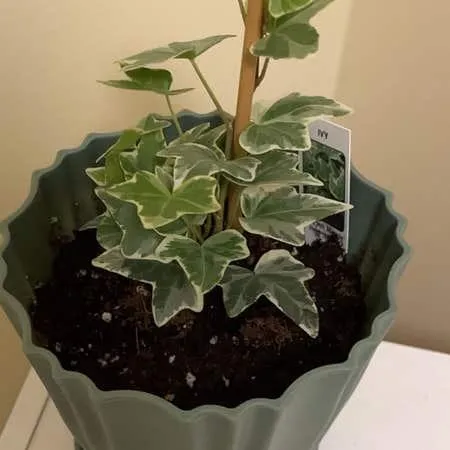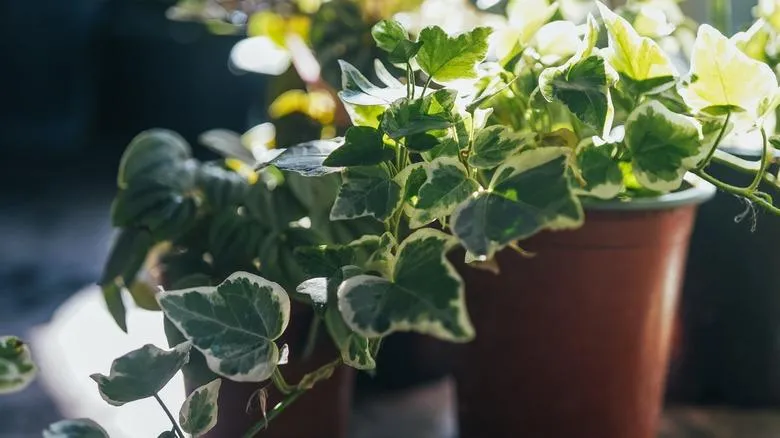Understanding Ivy’s Watering Needs
Ivy is a versatile plant that thrives in a variety of indoor and outdoor settings. However, one of the most common questions ivy owners have is how often they should be watering it. The frequency of watering depends on several factors including the type of ivy you have, its location, season, and potting mix. Let’s break down the basics.
Ivy Types
- English ivy: Prefers moist soil and appreciates water every 5-7 days.
- Swedish ivy: Likes soil to dry slightly between watering, around once a week.
- Boston ivy: Thrives with slightly drier conditions, water every 7-10 days.
In general, English ivy needs the most frequent watering while Boston ivy does best with less frequent irrigation. The type of ivy you have will indicate its specific moisture needs.
Location and Season
Ivy watering schedule also varies according to location and weather conditions. Indoor ivy tends to dry out faster than outdoor plants and requires water every 5-7 days. In the heat of summer, outdoor ivy may need water every 3-5 days to keep soil moist but not soaked. Come fall and winter, cut back to every 7-10 days as things cool down.
Soil Moisture
Perhaps the best indicator of when to water is checking the soil moisture itself. Stick your finger an inch into the soil – if it feels dry, it’s time to water. Ivy prefer moist but not soggy soil. So water thoroughly until excess drains out the bottom, then allow the soil to partially dry before watering again.
Watering Techniques and Common Mistakes
Now that we’ve outlined the basic watering schedule, let’s look at some best practices:
Water Thoroughly at Ground Level
Avoid sprinkling water on foliage as it can cause spots. Direct water to the soil around the base of the plant so it evenly absorbs down into the roots. This prevents dry spots and allows for deep, thorough hydration.
Beware of Overwatering
While ivy likes moisture, soggy soil is risky business. From my experience, overwatered ivy is prone to root rot which can stunt growth or kill the plant. When in doubt, wait an extra day before watering and always check soil moisture first. It’s better to let it dry out slightly than drown in waterlogged soil.
Adjust for Container Size
Ivies in smaller pots will dry out faster than in larger containers. If housed in a 4-inch pot, check soil every 3-4 days compared to 5-7 days for a 10-inch pot. The tighter quarters mean more frequent water top-ups are needed to keep roots hydrated.
Be Extra Careful in Winter
Basically, ivy goes into semi-dormancy when temperatures drop. It needs barely any water during winter so take care not to overdo it and create root rot conditions. Going dry is safer than soggy in the colder months.

Keeping these techniques in mind will help ensure your ivy’s soil stays moist without going overboard. Too little water risks wilting while too much invites pests and disease. With diligence, you’ll find the right watering zone for healthy, happy ivy.
Signs Your Ivy Needs Water
We’ve covered how often to water based on plant type, pot size, and season. But what are the actual signs that show it’s time for a good soak? Here are some tell-tale moisture stress clues:
Wilted or Drooping Leaves
Much like us humans, ivy will display wilty symptoms when thirsty. Leaves lose their pep and take on a limp, tired appearance.
Shriveling or Crinkled Texture
Dehydrated ivy foliage develops a rumpled, shriveled texture. The leaves lose their smooth shape when lacking water.
Dull Color
Thirsty ivy often appears less vibrant green in color. Proper hydration maintains a lively, rich hue to foliage.
Light Soil Weight
Pick up the pot – dry soil has less heft than watered soil. If you can’t feel the weight, it may be parched.
Leaf Drop
In extreme cases where soil dries to the point of drought stress, some lower or damaged foliage may drop prematurely.
If you notice any of these visual cues, it’s time for an H2O refresh! Water deeply until excess runs from the drainage holes. With practice, you’ll learn to read your ivy’s physical signals for its perfect hydration schedule.
Common Ivy Care Questions
You’re probably wondering, what if my ivy’s in unusual conditions? Here’s help with some other growing situations you might encounter:

Ivy in Low-Humidity Home
If indoors with dry winter air, misting foliage weekly with a spray bottle helps ivy thrive. Consider a pebble tray or humidifier too. The extra moisture boost may mean watering every 4-5 days versus 5-7 days.
Outdoor Container Ivy
Larger pots outside dry out faster than in-ground plants. Check soil every 3-4 days in summer versus weekly for garden ivy. Give containers a thorough soaking and let fully drain versus light sprinkles.
Newly Transplanted Ivy
Kind of like a new baby, a freshly relocated ivy needs extra TLC. Keep soil moist but not soaked for the first 2-4 weeks as roots establish in a new spot. This means watering every 2-3 days initially if conditions are hot/sunny.
Diseased or Pest-Infested Ivy
If foliage looks unhealthy, you may need to water slightly less frequently (every 7 days versus 5) until issues clear up. Too much moisture can exacerbate existing problems.
I know caring for houseplants can seem like guesswork at times! But if you tune into your ivy’s needs based on these guides, you’ll achieve pro-level plant parenting skills, my friend. Feel free to type any other questions you may have. I’ve got dozens more hilarious plant stories where those came from!
Frequently Asked Questions
By now you’ve got the gist of basic watering down. But to really cement best practices, here are answers to some commonly asked questions:
How much water should I give my ivy each time?
Water thoroughly until it drains freely out the drainage holes. This ensures full moisture penetration. For a 4-inch pot, about 1⁄2 cup per watering should suffice. Go up to 1-2 cups for larger pots.
Should I let Ivy dry out between waterings?
Yes, it’s ideal to allow top 1-2 inches of soil to dry slightly before rewatering. Complete soak and then partial drying is ideal versus constantly soggy soil.
What happens if I overwater Ivy?
Root rot can occur from wet feet. Leaves yellow, drop off, and stems decay at soil line. Good drainage is key to prevent soil from becoming waterlogged and damaging roots.

Will misting Ivy leaves substitute for watering the soil?
While misting adds humidity, it does not hydrate roots like watering from below. Direct moisture to soil surface for healthy uptake rather than just foliage spray.
Will Ivy grow back if I accidentally let it dry out fully?
Yes! Ivy is resilient and can recover from short dry spells. If leaves wilt but stems remain green, give a thorough drink and new growth should emerge. Just don’t let drought stress persist.
Hope these explanations help provide clarity on ideal ivy irrigation! As always, listen to your plant and adjust schedule according to its needs shown through physical signs. With TLC, your ivy will flourish for many years.
How Often to Water Ivy
| Ivy Type | Watering Frequency | Notes |
|---|---|---|
| English Ivy | Once every 7-10 days | Needs evenly moist soil |
| Swedish Ivy | Once every 5-7 days | Tolerates slightly drier conditions |
| Needlepoint Ivy | Once every 5-10 days | Water less in winter when growth slows |
| Spider Ivy | Once every 7-14 days | Allows soil to dry slightly between waterings |
| Baltic Ivy | Once every 5-10 days | Sensitive to overwatering, let soil dry out |
FAQ
-
How often should you water ivy?
Ivy generally needs watering once a week, but it depends on where it’s located and the weather. Indoor ivy may need a little less whereas outdoor ivy in hot weather may need a bit more. Basically, check the soil – if it’s dry 1-2 inches below the surface, it’s time to water.
-
Should I water ivy from above or below?
It’s best to water ivy from below by putting the plant in a tray of water until the soil is moistened. This prevents leaf damage from overhead watering. However, light misting above works too on occasion. The goal is to keep the soil damp without oversaturating.
-
What happens if I overwater ivy?
If you overwater ivy, the roots can rot which is no good. The foliage may also yellow and drop leaves. Too much water essentially drowns the plant. it’s better to water thoroughly when the soil is dry than to keep it constantly soggy. Moderation is key, as they say!
-
Can ivy thrive with less water?
Surprisingly, some experts say ivy can tolerate some dry spells fairly well. It goes into a sort of dormancy when soil moisture is depleted. However, long periods without water will surely stunt its growth over time. Provided the plant gets adequate water most weeks, a few parched ones here and there likely won’t do too much harm.
-
Should I fertilize ivy along with watering?
Fertilizing every few months during the growing season in addition to regular watering can boost an ivy’s growth and make its foliage a lush green. Look for a balanced houseplant fertilizer and follow label directions. Nonetheless, too much fertilizer risks burning the roots, so go lightly. It’s better to drag your feet on fertilizer than go overboard.
-
How can I tell if my ivy is getting too much or too little water?
There are a few signs that may indicate underwatering or overwatering of ivy: wilted or yellow foliage signals too little water; brown leaf tips or soggy soil mean too much. Drooping or stunted growth could go either way. When in doubt, the roots hold clues – check if they’re healthy white or have turned mushy and black.

On the other hand, ivy watering needs can vary greatly depending on the variety and growing conditions. English ivy tolerates fluctuations more than some other kinds. At the same time, adequate >drainage is crucial to prevent root rot regardless of how much you water. A happy medium of observing the plant and following basic guidelines should suffice. Regardless of the approach, consistency is key.
